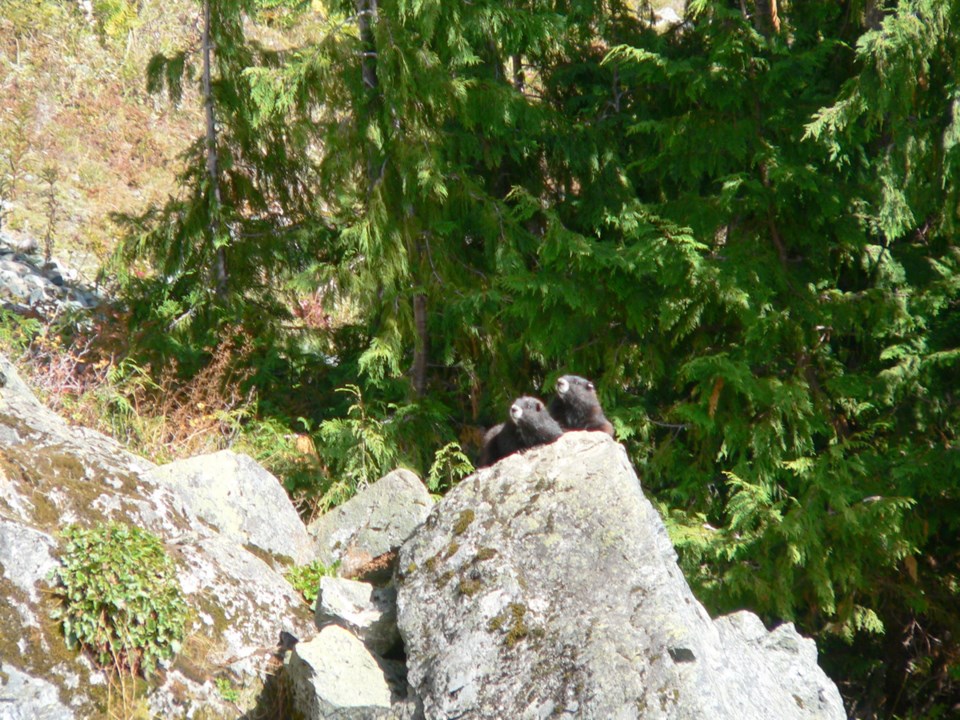The endangered Vancouver Island marmot, whose numbers in the wild once dropped to fewer than 30 on just five mountains, continues to make a slow but steady recovery.
The Marmot Recovery Foundation released 13 marmots on Mount Washington last week and says the animals now inhabit 25 Island mountains in numbers approaching 300.
Nevertheless, Marmota vancouverensis remains one of the rarest mammals in the world, and the Nanaimo-based charity hopes to use $205,000 from the province and two forest companies to eventually increase the population to 600 in three regions.
A captive breeding program that began in 1997 at four facilities across the country has produced 564 pups to date — including 12 this year from the Calgary Zoo and one from the Toronto Zoo.
So far, 477 marmots have been released from captivity. Predators remain a problem, however, and rebuilding the population requires painstaking work.
Cheyney Jackson, field co-ordinator with the recovery project, said expanding the marmots’ distribution is as important as rebuilding their population. “If something happens to the marmots in one area — if all of them are in that one area — they’re all affected,” she said. “And that just puts them at much greater risk for extinction.”
Most of the wild marmots live in the Nanaimo region, so the foundation is working to expand their numbers in Strathcona Provincial Park, where team members plan to release 11 captive-bred marmots in July.
“It has a bunch of fledgling colonies that have a really small number of marmots,” Jackson said. “We want to get them to the size where, if a predator comes and removes one or two marmots, it doesn’t mean the end of that colony. And they’re not there yet.”
The rebuilding has been slower than in the Nanaimo region, where researchers believe existing wild colonies assisted recovery efforts that began in 2003.
“They contributed by breeding and really supported those captive-bred marmots that we released out there,” Jackson said. “In Strathcona, when we started doing releases in 2007, marmots had not been confirmed in the region for a couple of decades. So there was nothing to start from. It’s been a lot more challenging, and predation has been a really big issue for us in the park, too.”
One of the foundation’s strategies is to “pre-condition” marmots on Mount Washington, where researchers can keep a closer eye on them and where it’s thought human activity keeps marmots’ main predators — wolves, cougars and golden eagles — at bay.
The marmots released last week were bred at the Calgary and Toronto Zoos, the Mountain View Conservation and Breeding Centre in Fort Langley, and the Tony Barrett Mount Washington Marmot Recovery Centre.
They will spend a year living on the mountain in something of a trial run, Jackson said. “So they get to practise running away from predators and foraging and exploring new terrain and digging burrows, and they get to do a true wild hibernation. And then next year, we’ll take those marmots and we’ll move them into the park when they already have a bit of wild experience.”
They’ll be released into the park with wild marmots and those straight from breeding facilities in hopes the combination will minimize losses to predators.



